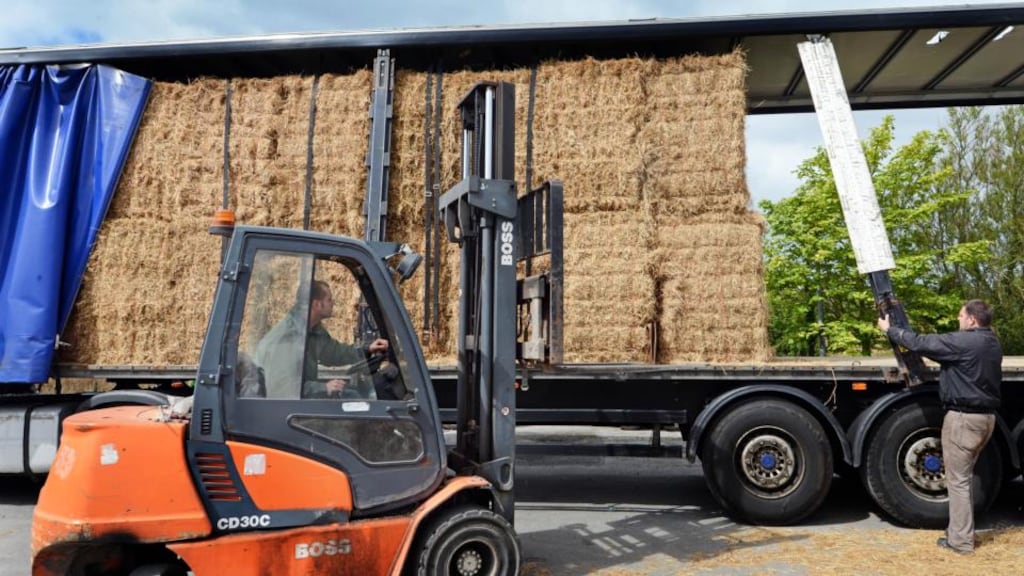At the height of the fodder crisis, when the Irish Farmers' Association and the Department of Agriculture were importing hay from France, and pictures adorned our TV screens of airport authorities cutting grass verges for bales, one west Cork farmer was very relaxed.
Bantry-based Steve Collins overcame the crisis by using hydroponically grown barley seeds to feed his herd of 50 Dexter cattle.
By placing barley seeds in a growing tray in a climatically controlled hydroponic unit, he was able to grow them into grass mats 15cm to 20cm in height within six days. The unit, which is operated on a rotational system, produces 400kg of fresh green fodder each day (equivalent to one round silage bale).
“My land wouldn’t stand up to 50 cattle without the system, and I believe if I had been feeding them silage last winter, it would have cost me double,” Dr Collins says.
The feeding crisis was brought about by a very wet summer last year and a long wet winter followed by one of the coldest springs on record.
In May, the Irish Creamery Milk Suppliers Association (ICMSA) said the fodder crisis would cost farmers more than €900 million.
"As spring was so late this year, there are no stores of silage and hay left. Feed for the coming winter is dependent on the harvest."
Unsustainable prices
Collins said that, although there was a reasonable first cut, everything is drying out fast, with many people reliant on a healthy second cut.
“Paying in excess of €60 for a round bale of silage, as people were doing last winter, is unsustainable.”
He says one of the huge benefits of the hydroponics system, developed by Australian company Fodder Solutions, is that it is totally predictable.
Owing to the climatically controlled system, the feed is not reliant on any weather patterns and will produce the same quantity of feed year on year so it is possible for farmers to accurately forecast their feed costs.
“You know pretty much what your feed bill will be instead of being at the mercy of grass harvest and weather,” he says.
“Farmers around me were getting into a real panic last winter with bales costing up to and more than €60 in some cases. I had a very stress-free winter though.”
The hydroponic system also helps Collins improve his land as it is rested far more due to the lack of need to cut silage.
“Through resting the land, we are reclaiming what was rough, boggy land worth under €1,000 an acre into what is now clover pasture and reasonable grazing land.”
He says the system cost £28,000 to purchase and install, adding “at last year’s prices, payback time is only a few years”.
“It’s quite a lot of money but, for me, the comparison is between this cost and the cost of silage land. Silage land costs about €10,000-€15,000 per acre and gives about 10-20 bales of silage per year. If you are running my system all year around, you make the equivalent of 365 bales of silage. This would require approximately 20 acres of silage land.
“Do I buy land and keep cattle fed throughout the winter, or do I buy this? It was a no-brainer.”
Qualified as a medical doctor, with a PhD in nutrition, Collins was awarded an MBE at the age of 35 for his work in famine relief. He worked as a doctor in all of the worst famines and wars of the 1980s and 1990s in places such as Somalia, Sudan, Rwanda, Sierra Leone and North Korea.
He developed the Community Based Therapeutic Care (CTC) programme which is now used worldwide to treat malnourished people. This led on to the formation of Valid International and Valid Nutrition, companies which help provide nutritional food to people in deprived areas of the world. It was this background and interest in nutrition that attracted Collins to hydroponics, as some of the nutrition from grain is indigestible.
High in protein
This makes grain or grain-based concentrates less efficient for nourishing animals. Also, cattle are reliant on some forage, and often do not thrive without a full range of nutrients in their diet. The feed contains high protein levels, but with very little starch. Over 90 per cent of it is digestible and the entire mat of feed is edible so there is no waste, Collins says.
“Many of the nutrients in grain are locked up in inert plant storage compounds. These are not digestible by mammals as we do not have the enzymes to break them down. This means that the nutrients in these plant storage compounds pass straight through the animal gut and are lost. The germination/sprouting process breaks down these storage compounds in the sprout into a form that is easily digestible by animals. The sprouting process also improves protein quality and vitamin content.”
He is looking to demonstrate that meat raised on sprouted barley has a nutritional profile that can help protect people against heart disease.
He says research carried out in the US found beef from cattle raised on grass and green feed has more “healthy fat” than other beef. This healthy fat protects people against heart disease.











